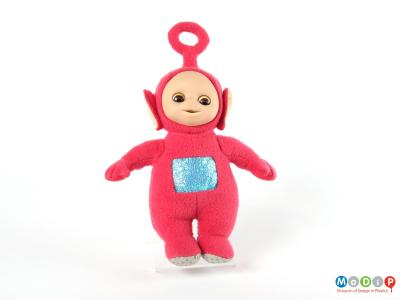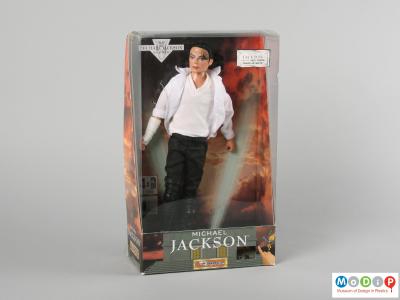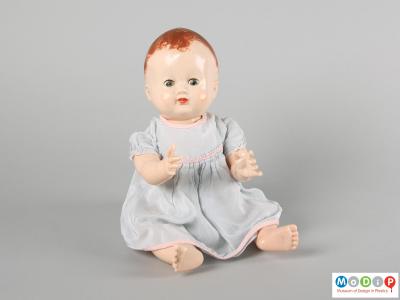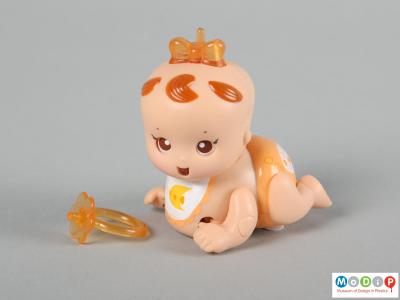A one-time cherished plaything found in all cultures, the ubiquitous doll now appears in many guises. The development of modern materials and low production costs means that these human like figures often reflect current trends in popular culture and their sale can be a big part of a marketing campaign to popularise the character.
In 1997 such was the demand for the soft bodied Teletubbies television characters (1) that the toy was sold out in the run up to Christmas, becoming the most successful export of BBC Worldwide and helping to amass millions of pounds worth of profits for the corporation. Media personalities (2 & 3) are regularly portrayed as dolls and although mass produced, many are sought after by a collectors market with an insatiable appetite.
The fashion doll, Barbie (4), was launched by Mattel in 1959 and still captures the lion’s share of this particular market. These iconic vinyl dolls with their extensive range of accessories reflect the trend for an increasingly consumer led society and have often sparked debate about the unrealistic body image it presents to impressionable young girls. In response to this, the waist has been increased in size in more recent years. Mattel claims that there is one Barbie doll sold every 3 seconds.
Action Man (5) was launched in 1966 by Palitoy as an action toy for boys. It was based on Hasbro’s American G.I Joe. Like Barbie, Action Man had innumerable accessories, many priced to be affordable to children with pocket money and encouraged imaginative play. Many innovations were introduced in the 1970s such as the gripping hands and flocked hair.
Nurturing instincts in young children are encouraged by baby dolls. This Pedigree example (6) was made in the 1940s and has a hard body and face and is designed to be cradled and dressed. More contemporary dolls are made from a more robust, pliable vinyl. The Micro Babies (7) are battery operated crawling, blinking and singing dolls offering an interactive experience.







